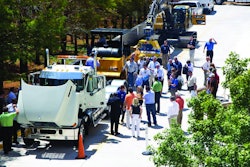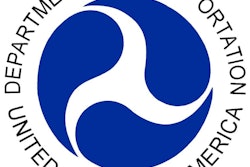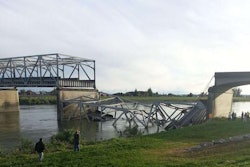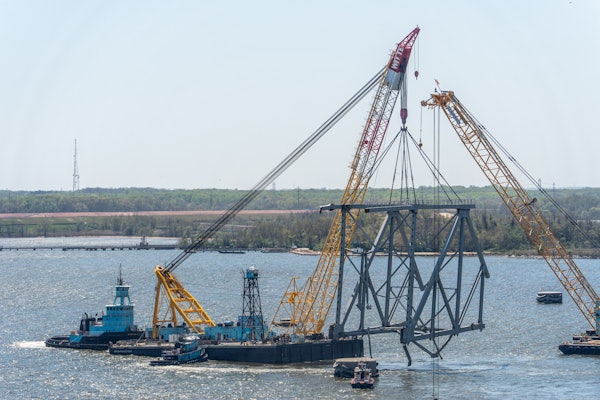City of Fort Worth, Texas DOT, Sundt Construction collaboratively redesign West 7th Street Bridge
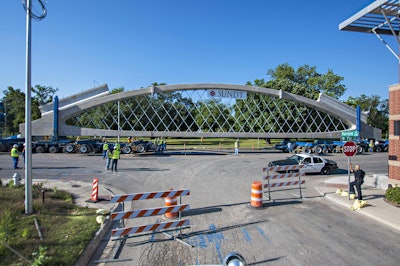 (Photo: Texas DOT)
(Photo: Texas DOT)The West 7th Street Bridge in Fort Worth, Texas, is handling its heaviest loads ever as a dozen 300-ton arches are moved into place as part of a $25.9 million reconstruction project for the 100-year-old bridge.
The bridge design is a collaboration among the City of Fort Worth, the Texas Department of Transportation and Sundt Construction. The arches were built offsite to be moved into position on the bridge. When it’s done, it will be a signature structure on the city’s west side and the world’s first-ever precast network arch bridge, according to city officials.
“The design of this bridge and casting the arches offsite has allowed us to keep traffic flowing while making progress on the project,” Sundt Texas Area Manager Chris Cedar said. “Once all the arches are in place the bridge will be shut down for just 150 days. Using conventional construction techniques, the bridge would be down for 10 to 11 months.”
The original 982-foot span connects downtown Fort Worth to its cultural district and attractions like the Amon Carter Museum of Western Art, the Kimball Art Museum, the Museum of Modern Art and the Will Rogers Complex. Built in 1913, the bridge was expanded in 1953 when the Trinity River was rerouted and levees added along its banks. Beams, girders and the deck of the bridge have been slowly deteriorating which meant Sundt crews had to shore the original 1913 span to make sure it could bear the load of the arches along with the self-propelled mobile transports that move each arch.
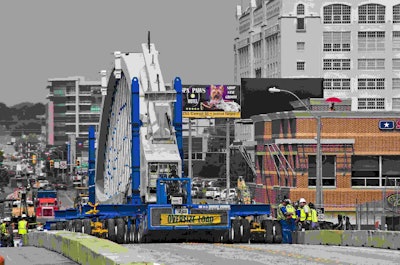 (Photo: Texas DOT)
(Photo: Texas DOT)The yard where the arches were cast is about a quarter mile from the bridge. The first arch took about six weeks to cast when worked started in June 2012. By the time they finished earlier this year, arches were taking three weeks to finish.
Each arch at 163 feet long and 23 feet tall, was cast on its side. A crane was used to lift them into a vertical position and then a system was developed to slide them into a place of storage.
Moving them into place requires two groups of self-propelled mobile transports with 15 axles each. Those were augmented with four additional dollies per transport to help distribute the 300-ton load. An operator with a remote control “drives” each arch into place on the bridge. The first arch took more than three hours to move.
Once in position, two LR1400, 450-ton cranes slowly lift each end of the arch and carefully move each end into place over new bridge columns.
The arch movement happens overnight to reduce traffic tie-ups. Once the last arch is placed in early June, the bridge will shut down for 150 days. Sundt will tear the old bridge down and build the new bridge in its place with plans to have it open by the beginning of November.
The new bridge will be a foot shorter but 30 feet wider, providing more room for pedestrians and cyclists.
“The City of Fort Worth wanted a gateway bridge,” Cedar said. “This will be something unique and it’s the kind of project you really enjoy working on.”
See the gallery below for more images of the crew moving and placing the 7th Street Bridge. All photos are courtesy of the Texas Department of Transportation.




